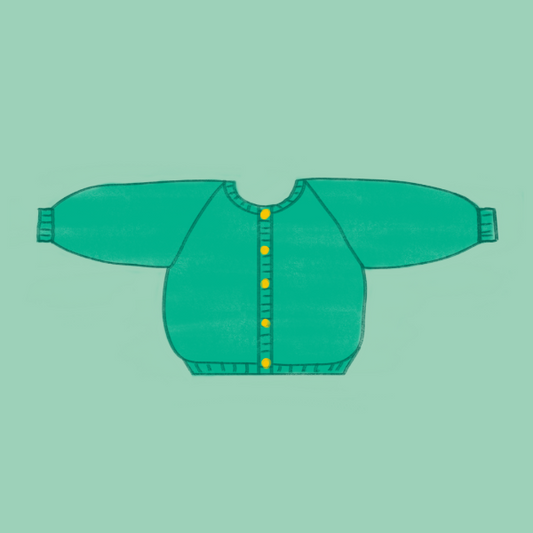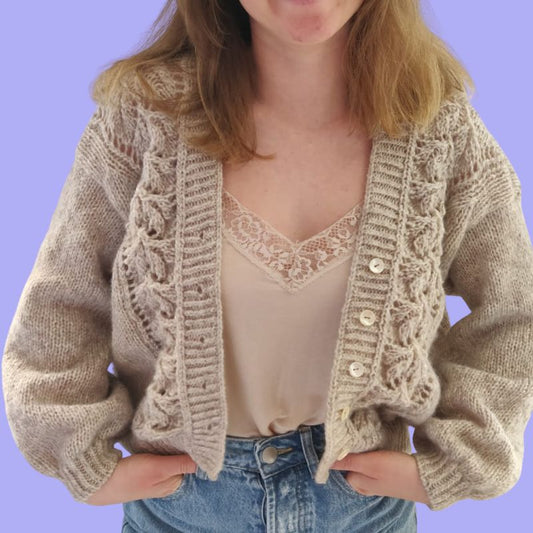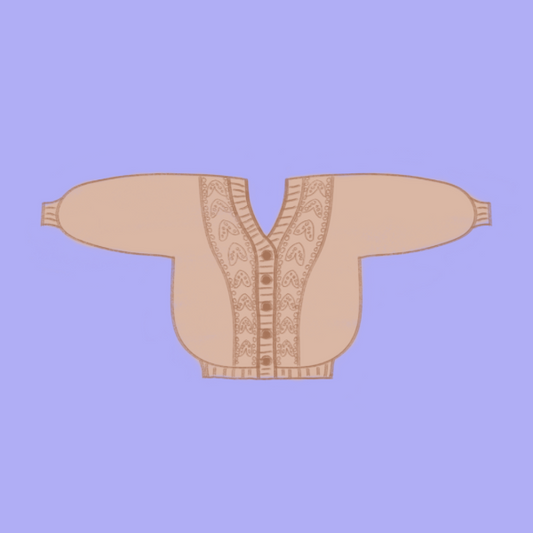Knitting Ribbing : The Ultimate Guide for Beginners and Beyond
Knit SisShare
Struggling to master ribbing (côtes tricot) in your knitting? Ribbing is essential for stretchy, durable edges and adds a polished look to your garments. From hats and cuffs to sweater hems, ribbing ensures a snug fit and keeps your work looking professional. This guide will show you how to create ribbing, troubleshoot common mistakes, and explore exciting pattern ideas using ribbing techniques.
Tip: Whether you're a beginner or a seasoned knitter, learning ribbing will elevate every project you tackle!
What Are Ribbing in Knitting?
Ribbing in knitting is a pattern of alternating knit and purl stitches, creating vertical ridges. It is both functional and decorative, offering elasticity and structure to knitted garments.
Key Features of Ribbing:
- Stretch: Provides elasticity for snug-fitting edges.
- Versatility: Commonly used in cuffs, necklines, and waistbands.
- Customizable: Ribbing can be tailored to different widths and styles.
How to Knit Ribbing: Step-by-Step Instructions
1. Materials
- Any yarn weight (medium weight works well for beginners).
- Knitting needles suited for your yarn.
2. Cast On
Choose a stitch count divisible by the ribbing pattern you want to create.
3. Choose Your Ribbing Pattern
- 1x1 Ribbing: Alternate 1 knit stitch (K) and 1 purl stitch (P).
- 2x2 Ribbing: Alternate 2 knit stitches (K) and 2 purl stitches (P).
Pro Tip: For maximum stretch, use smaller needles for the ribbed section compared to the main body of your project.
4. Work the Pattern
- Row 1: K1, P1 (or K2, P2) across the row.
- Row 2: Repeat the same pattern.
- Continue until the ribbing reaches your desired length.
Troubleshooting Ribbing Problems
Why does my ribbing look uneven?
- Uneven tension between knit and purl stitches can distort the ribbing. Practice maintaining consistent tension to fix this.
Why does my ribbing curl?
- While ribbing generally lies flat, loose edges can curl. Use smaller needles or block your work for a cleaner finish.
2x2 ribbing is a knitting pattern alternating 2 knit stitches and 2 purl stitches across a row. This pattern creates stretchy, textured ridges and is commonly used in cuffs, collars, and hems.
Creative Uses for Ribbing in Knitting
1. Classic Edges
Ribbing provides stretchy, clean edges for hats, socks, and sweaters.
2. Bold Statements
Experiment with wide ribbing or color contrasts for unique patterns.
3. All-Over Ribbing
Use ribbing for an entire garment to create a slimming, textured design.
Advanced Ribbing Techniques
1. Mock Ribbing
An alternative for beginners, mock ribbing uses knit stitches only for a ribbed effect without purling.
2. Broken Rib
Add variety by breaking the ribbing pattern with plain knit rows.
3. Decorative Ribbing
Combine ribbing with cables or lace for a sophisticated twist.
Knit-Sis Patterns Featuring Ribbing
At Knit-Sis, we believe ribbing is where functionality meets creativity. Our patterns integrate ribbing into playful, colorful designs that are easy to follow.
Explore more ribbing-inspired patterns at Knit-Sis.com.
Conclusion: Master Ribbing With Knit-Sis
Ribbing is an essential technique every knitter should know. Whether you’re adding cuffs, creating texture, or designing entire garments, ribbing is your secret weapon for polished, professional results.
- Ready to get started? Check out our other blog content to improve your knitting skills
- Explore colorful, fun ribbing patterns at Knit-Sis.com and bring your projects to life!












